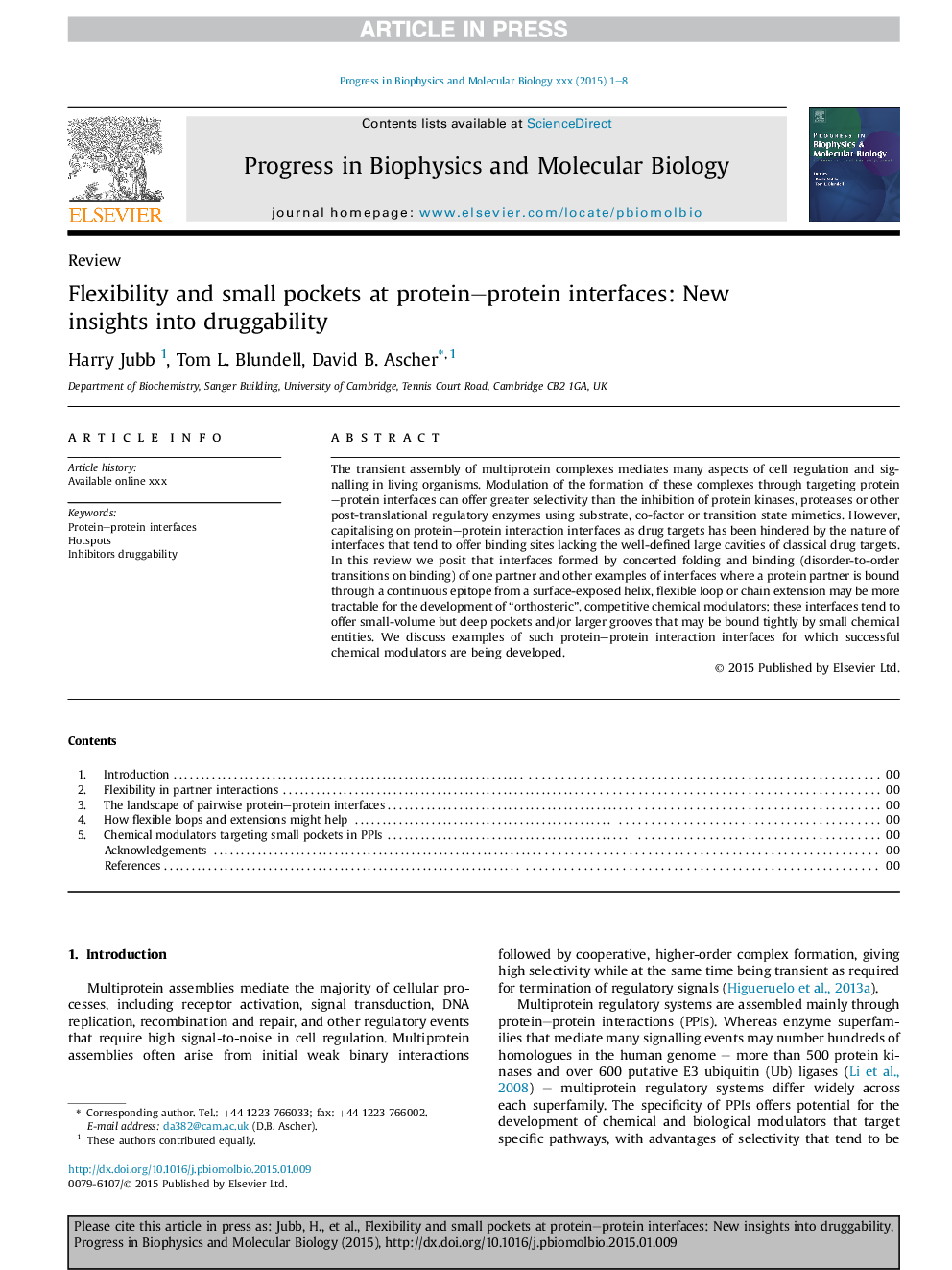| Article ID | Journal | Published Year | Pages | File Type |
|---|---|---|---|---|
| 10883557 | Progress in Biophysics and Molecular Biology | 2015 | 8 Pages |
Abstract
The transient assembly of multiprotein complexes mediates many aspects of cell regulation and signalling in living organisms. Modulation of the formation of these complexes through targeting protein-protein interfaces can offer greater selectivity than the inhibition of protein kinases, proteases or other post-translational regulatory enzymes using substrate, co-factor or transition state mimetics. However, capitalising on protein-protein interaction interfaces as drug targets has been hindered by the nature of interfaces that tend to offer binding sites lacking the well-defined large cavities of classical drug targets. In this review we posit that interfaces formed by concerted folding and binding (disorder-to-order transitions on binding) of one partner and other examples of interfaces where a protein partner is bound through a continuous epitope from a surface-exposed helix, flexible loop or chain extension may be more tractable for the development of “orthosteric”, competitive chemical modulators; these interfaces tend to offer small-volume but deep pockets and/or larger grooves that may be bound tightly by small chemical entities. We discuss examples of such protein-protein interaction interfaces for which successful chemical modulators are being developed.
Keywords
Related Topics
Life Sciences
Biochemistry, Genetics and Molecular Biology
Biophysics
Authors
Harry Jubb, Tom L. Blundell, David B. Ascher,
